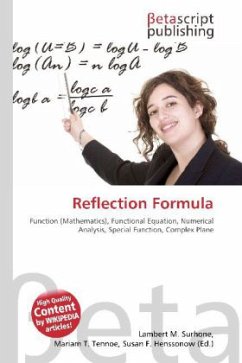
Riemann Hurwitz Formula
Versandkostenfrei!
Versandfertig in 6-10 Tagen
19,99 €
inkl. MwSt.

PAYBACK Punkte
10 °P sammeln!
Please note that the content of this book primarily consists of articles available from Wikipedia or other free sources online. In mathematics, the Riemann Hurwitz formula, named after Bernhard Riemann and Adolf Hurwitz, describes the relationship of the Euler characteristics of two surfaces when one is a ramified covering of the other. It therefore connects ramification with algebraic topology, in this case. It is a prototype result for many others, and is often applied in the theory of Riemann surfaces (which is its origin) and algebraic curves. Now assume that S and S are Riemann surfaces, ...
Please note that the content of this book primarily consists of articles available from Wikipedia or other free sources online. In mathematics, the Riemann Hurwitz formula, named after Bernhard Riemann and Adolf Hurwitz, describes the relationship of the Euler characteristics of two surfaces when one is a ramified covering of the other. It therefore connects ramification with algebraic topology, in this case. It is a prototype result for many others, and is often applied in the theory of Riemann surfaces (which is its origin) and algebraic curves. Now assume that S and S are Riemann surfaces, and that the map is complex analytic. The map is said to be ramified at a point P in S if there exist analytic coordinates near P and (P) such that takes the form (z) = zn, and n 1. An equivalent way of thinking about this is that there exists a small neighborhood U of P such that (P) has exactly one preimage in U, but the image of any other point in U has exactly n preimages in U. The number n is called the ramification index at P and also denoted by eP.












